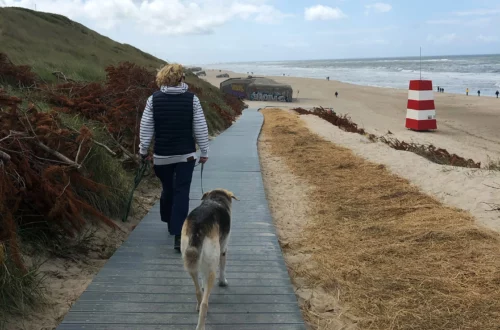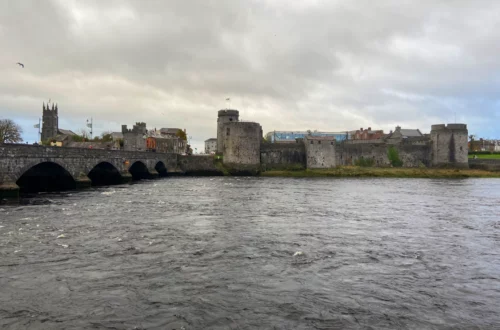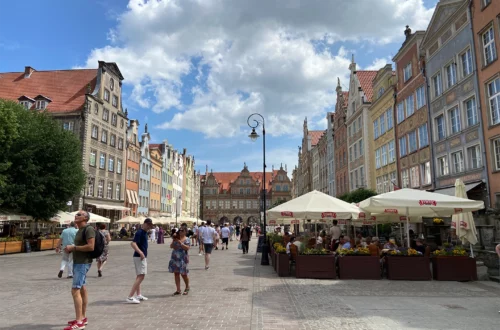
Connemara National Park & Kylemore Abbey Tour
From Galway – Ireland, I went on Connemara National Park & Kylemore Abbey Tour for a day, which I probably wouldn’t have chosen if I hadn’t seen the Cliffs of Moher before. If you have to choose between the two it depends on what you are more interested in: Connemara National Park is a lot calmer than the Cliffs of Moher and Kylemore Abbey is a castle-like building with such a rich history that it feels like you can walk through the centuries while you’re there.
In the early morning, two buses stopped in front of the Kinley Hostel, Galway, one mini-bus and a classic big tour bus. Ours was the smaller one and our group of 15 picked their seats.
Cong
The first stop of the tour was Cong (I don’t know why, either…), where the ruins of Cong Abbey and the Ashford Castle Hotel are the main attractions. There isn’t much left of the Abbey and there are also no plaques or explanations near the remains. Ashford Castle has been turned into a high-end hotel and you only get in when you have booked a room or are daring. As long as you walk like you own the place and don’t look too much like “I am here on a day tour and could never afford to stay here even for one night nor would I care to“ they won’t stop you from going in.
If you have seen the movie “The Quiet Man” you are in luck, since Cong is also the home of a Museum dedicated to the movie. If you were not alive in 1952 to see this romantic comedy-drama film when it was released, you may have seen it because you are a John Wane fan or you – like me – had never heard of it before.

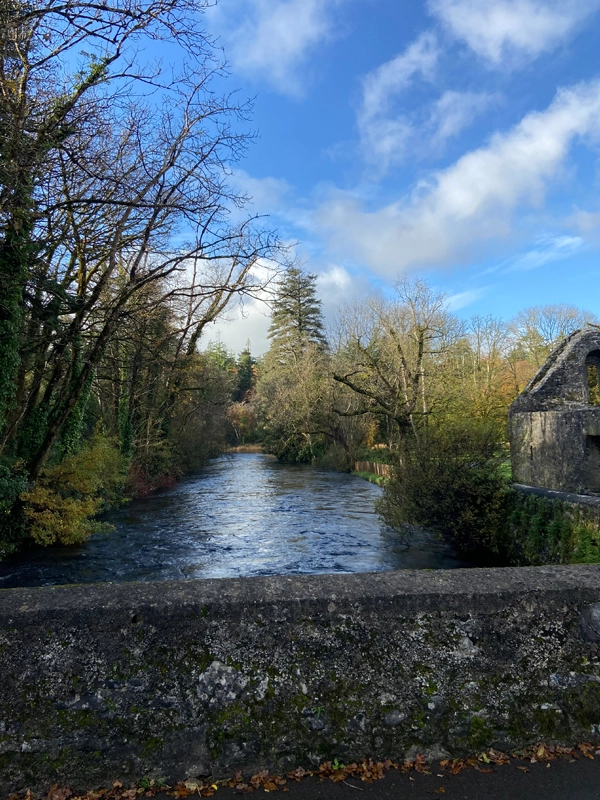
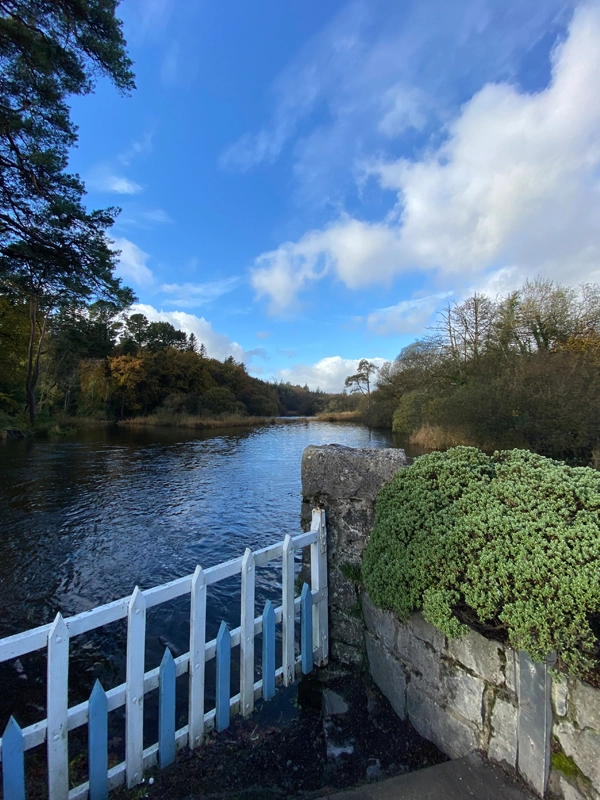
Apart from that Cong is a very sleepy little village with some pretty nature surrounding it. I had hoped to find a cafe or a bakery, or at least a grocery shop, but the only thing open was the gas station.
Connemara National Park
The next stop was at Lough Corrib, before we drove on to the Connemara National Park, with several stops at scenic points on the way.
At those spots where we got out of the bus, walked around by ourselves and once the engine had been turned off and people shut up, you couldn’t hear anything but wind and water. It filled me with a strange nostalgia as if I had been there before. Maybe in a different life.
There were no other people, no other tours and almost no animals either. Every now and then we saw a herd of sheep or a few Connemara ponies, but that was about it.
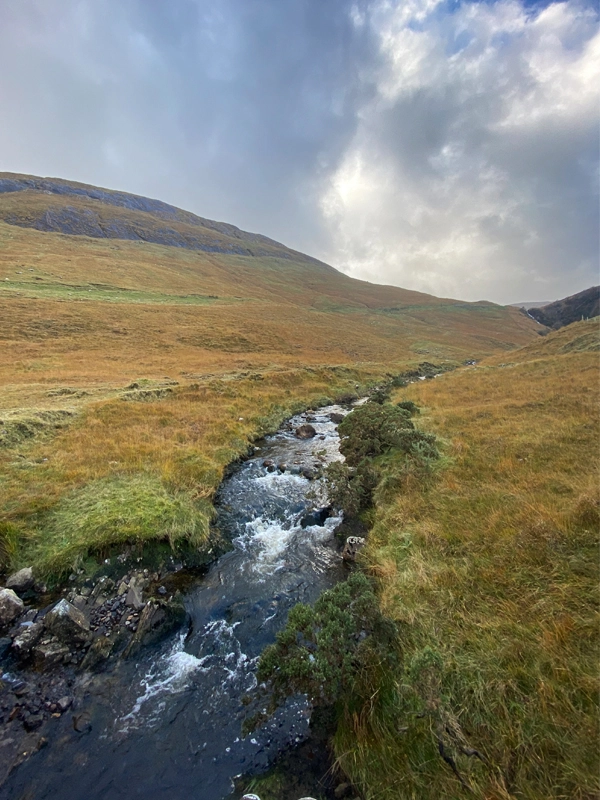
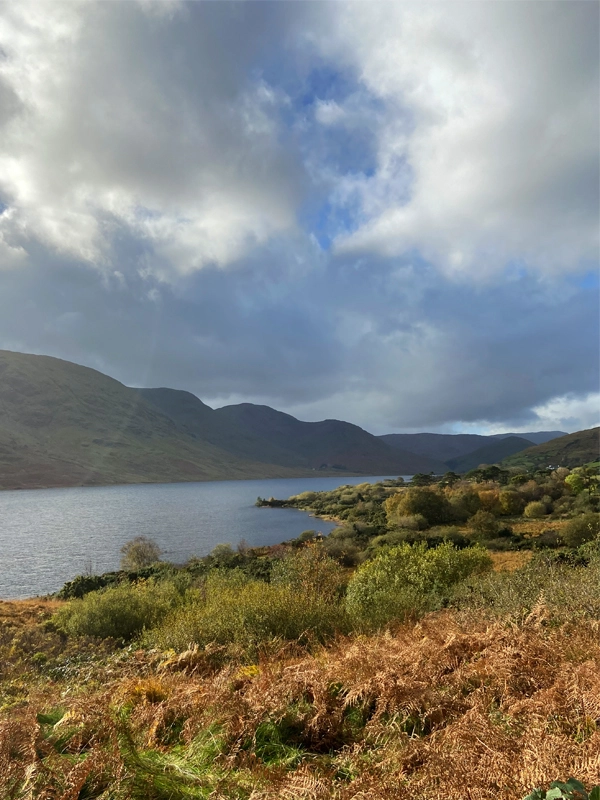
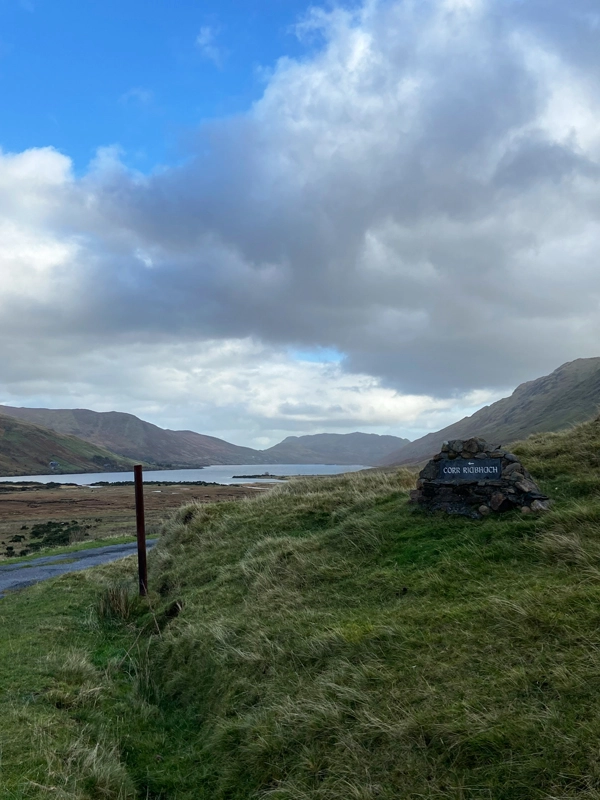
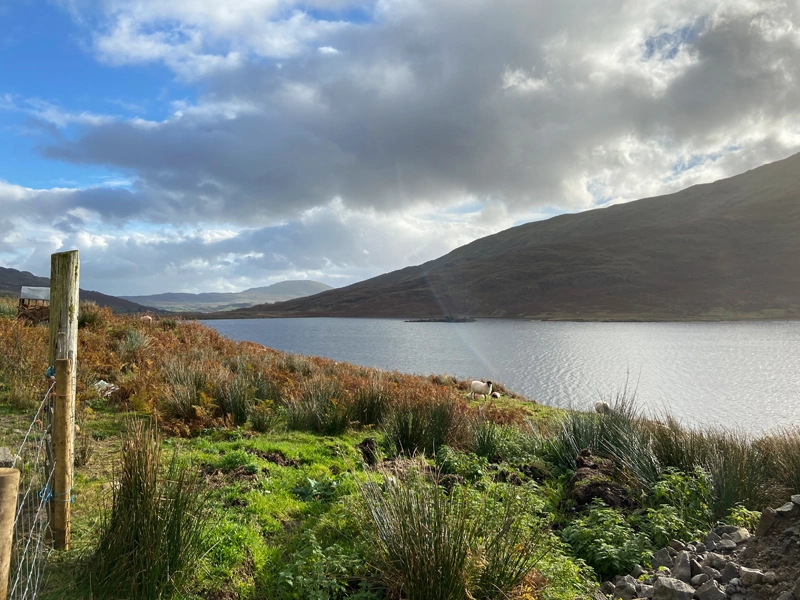
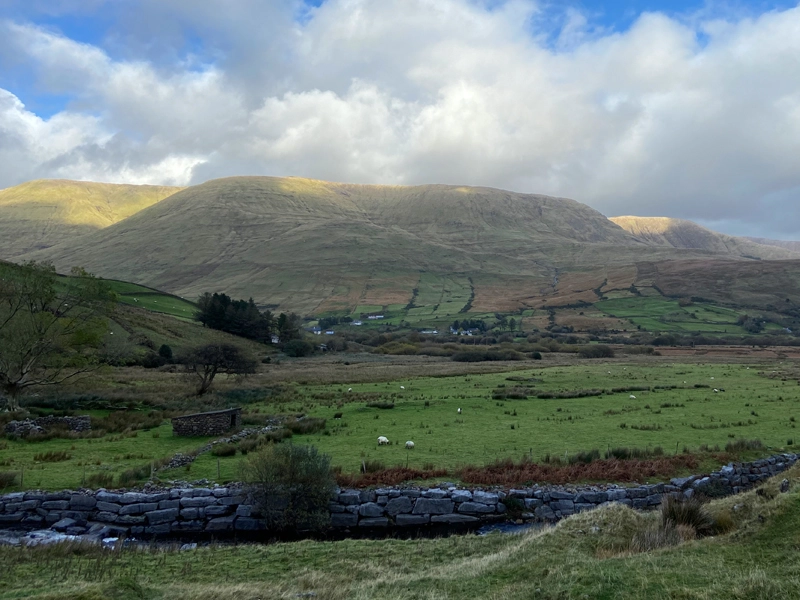
Kylemore Abbey
Kylemore Abby was the last and longest stop of the tour. This impressive building was originally an estate built in the 1860s by the Henry family, then it was turned into an Abby, a school and today serves as a museum to its rich history. The Benedictine Nuns of the Abby still live here and take care of the building, walled Victorian gardens and a Neo-Gothic Church.
The lake on the Abbeys grounds is called Lough Pollucapal and was used to boat on, teach swimming and cool off on hot summer days.
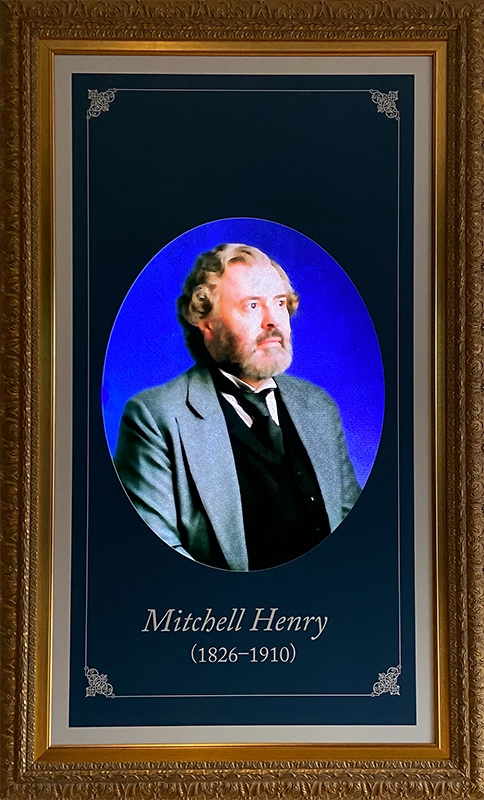
In the 1860’s Mitchell Henry, a British industrialist and politician built the castle-like estate as a wedding gift for his wife Margaret Henry.
While the locals didn’t like him at first, an English man building himself a pompous estate in the Irish countryside, their opinion quickly changed when the construction created about 300 jobs and he paid good money for resources and fair wages workers.
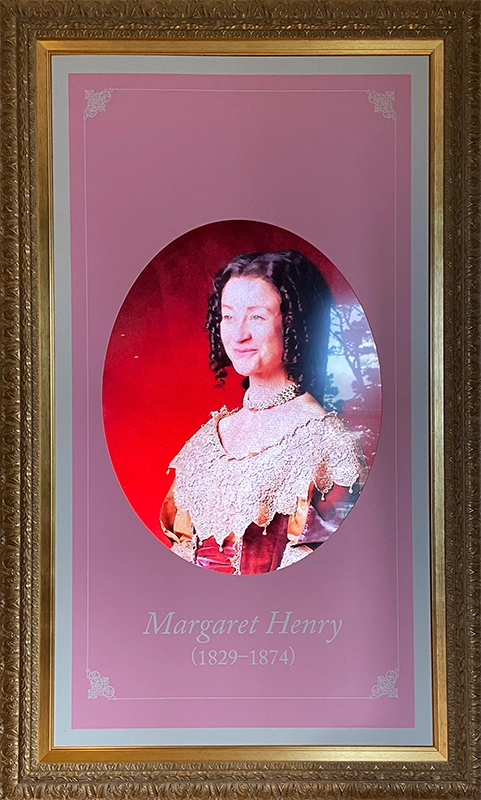
Margaret Henry also made a name for herself, helping out women and families in the surrounding villages and managing the estate while her husband was in Westminster. Despite being born in England the Henrys were big supporters of Irish independence and Mitchell Henry served as MP for County Galway from 1871 to 1885.
The Henrys raised their nine children (five daughters and four sons) in Kylemore.
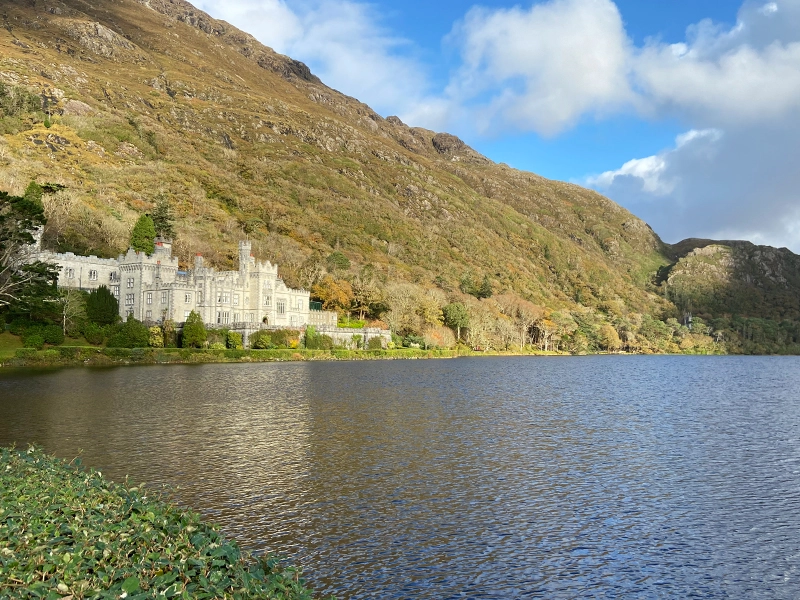
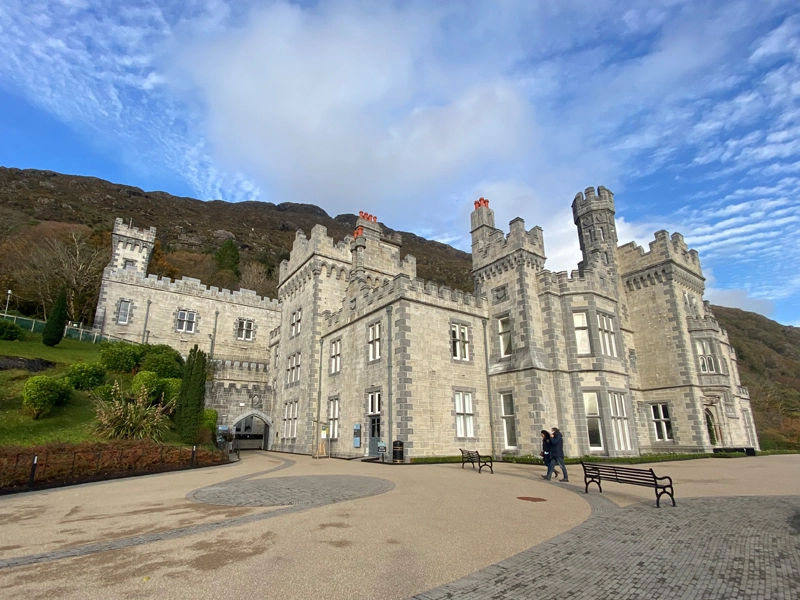
After the death of Margaret, the family stayed at Kylemore less and less until they completely abandoned the estate. It was reinhabited in 1920 by a group of Benedictine nuns, who had fled from Ypres during WWI, and turned into an Abbey.
Mitchell Henry had a Turkish bath installed at Kylemore next to the main house, for the enjoyment of family and guests. In the 1930s, the nuns converted the building into an international boarding school for catholic girls and later a day school for local girls, but the school was forced to close in 2010.
A multimedia exhibition brings the stories of Kylemore to life, from the Henry family to the nuns and the school until the present day. They have restored some of the rooms to how they looked in certain time periods, with the aid of historical photographs, artefacts from the Kylemore archive and historical costumes. Modern audio-visual displays make the exhibition more personal as the actors tell the stories from the historical figure’s point of view (see above the talking portraits of Henry and Margaret Mitchell).
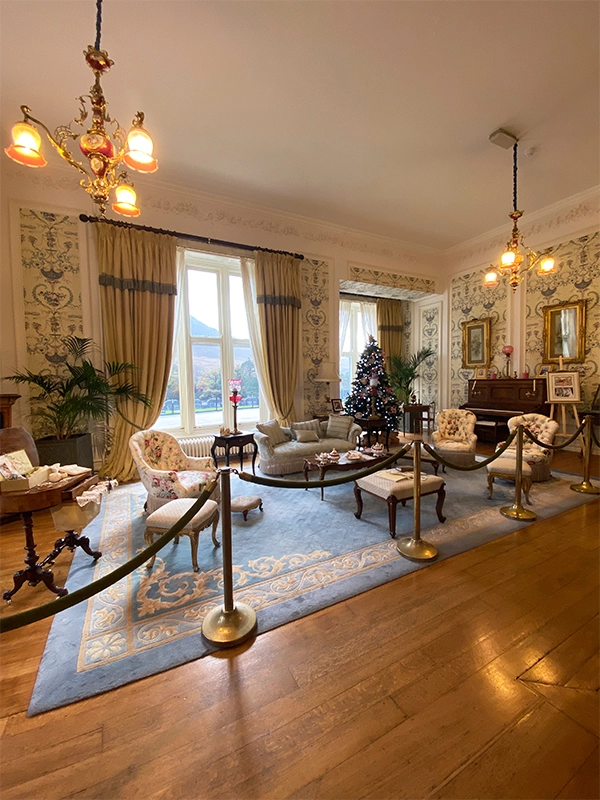
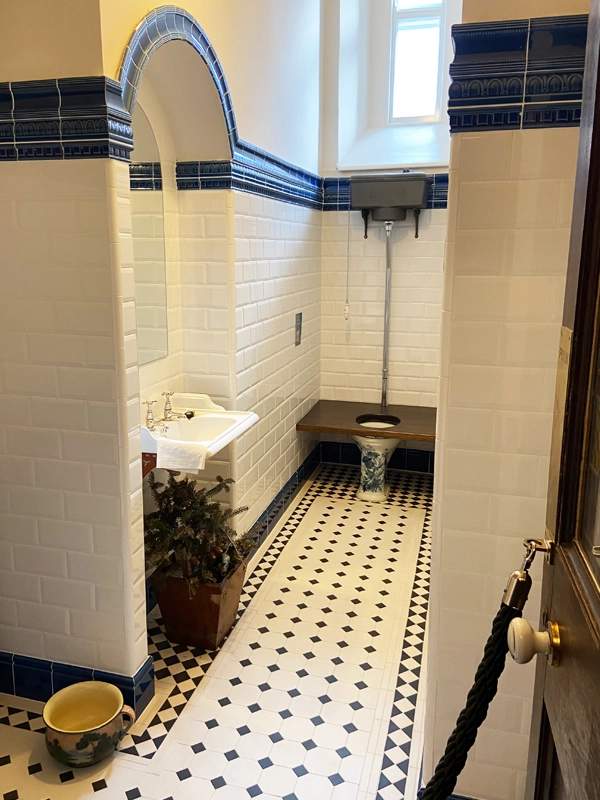
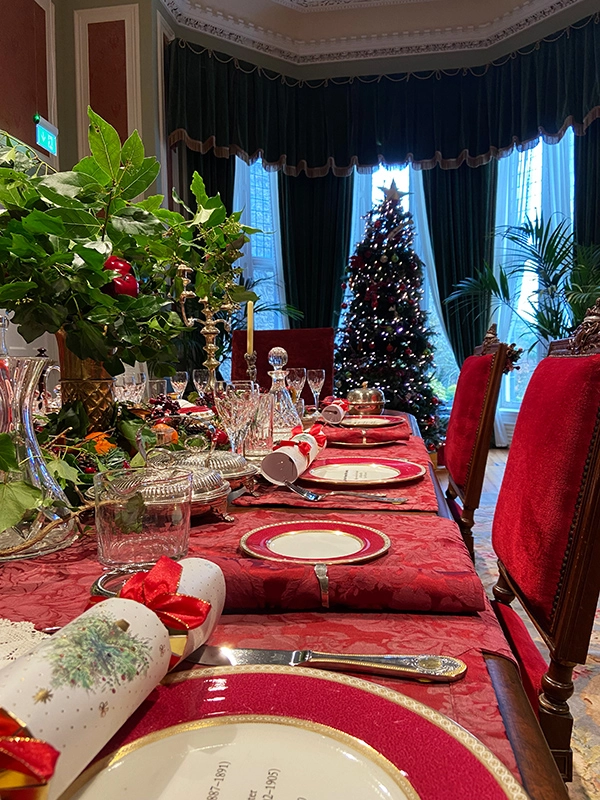
Neo-Gothic Church and Victorian Gardens
After the death of his wife Mitchell Henry had a church built in memory of Margaret. It was built between 1877 and 1881 as a miniature cathedral in a neo-gothic style.
Some features of the gothic style, such as figures of gargoyles were replaced with flowers, birds and angels to honour Margaret Henry.
The inside has special acoustics which attracts music ensembles and music lovers from all over the world.
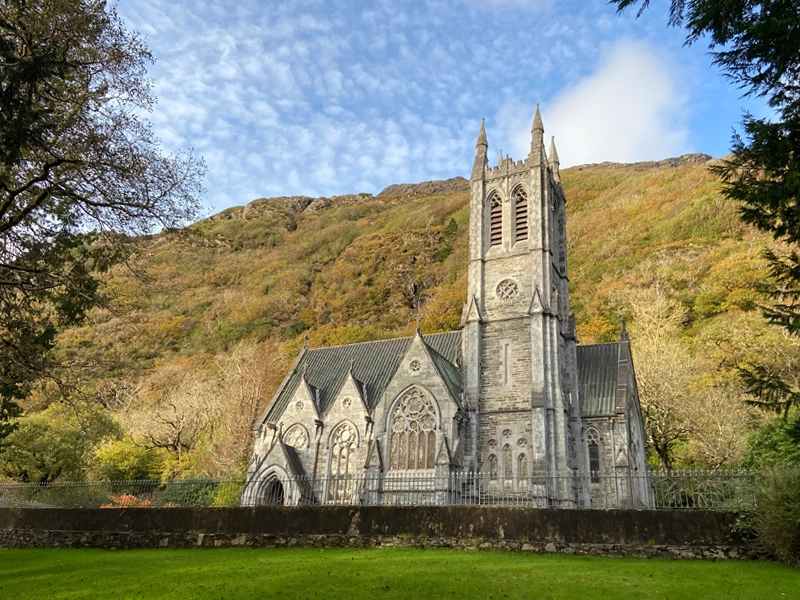
Almost 2km away from the main house are the Victorian walled gardens, they are made up of a decorative garden, originally used as a walking space and relaxing area, and the kitchen gardens used to supply the kitchens with herbs, veggies and fruits. A small brook separates the decorative garden from the supply garden. Originally 21 heated greenhouses ensured the estate was self-sufficient during all seasons, only two of them could be restored after the garden fell into disrepair once the Henrys had left.
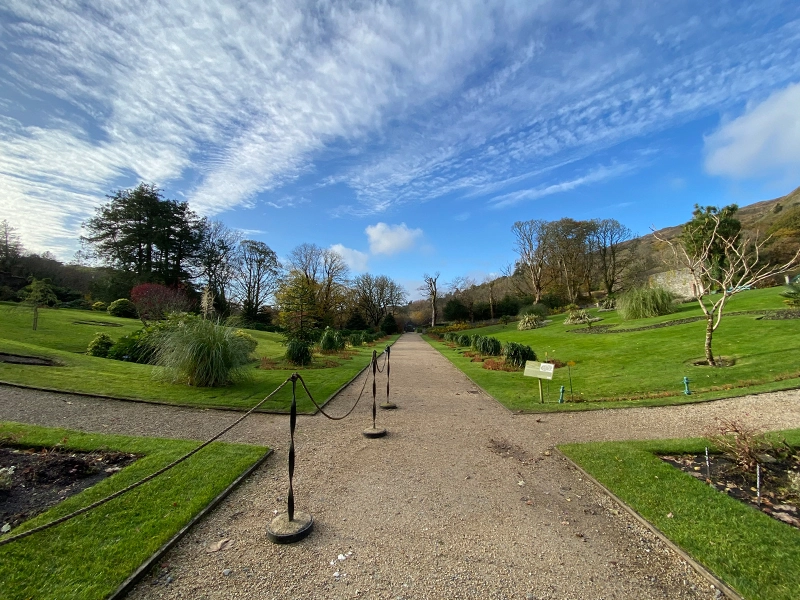
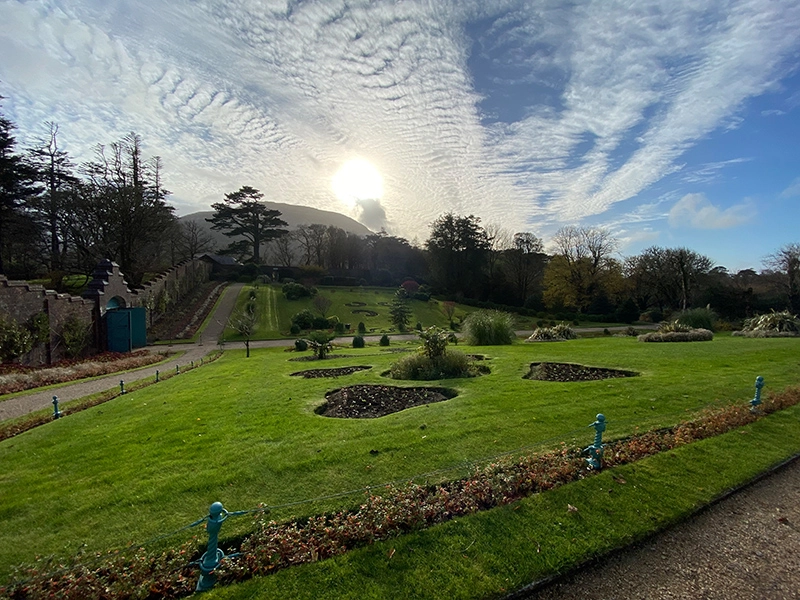
Once the nuns arrived in 1920, the gardens were brought back into use under the supervision of the local farmer and gardener Sr. Benedict, who also ran a nearby farm with beef, dairy cattle, and poultry.
To this day, the garden largely supplies the nuns and the Kylemore Kitchens where visitors can grab a bite to eat, whether they have chosen to visit the Abby or not.
In the Kylemore Kitchens, I was also finally able to get some food on this tour. They serve hearty and traditional meals, like pea-eggplant-quiche with sides of potato salad and tomato salad, all of it was rich and very filling for an affordable price.
In a small souvenir store near the kitchens, they also offer handmade delicacies souvenirs by the nuns and local artisans. I bought some brandy butter for Christmas time and a spice mix for Irish lamb stew to make at home.

After our time at Kylemore was up we all got back on the bus and drove straight back to Galway, along a scenic route, but without any more stops.
When I was in Galway, I didn’t have several tours to choose from, there was only one Connemara National Park & Kylemore Abbey Tour* being offered. Now that things are at the new normal I would advise you to look through the available tours (I linked* some down below) and decide on a tour that offers exactly what you want to see. Just remember to bring snacks.
Have you been on any day tours in Ireland?
If so, which one was your favourite? And if not, which one is on your bucket list?



